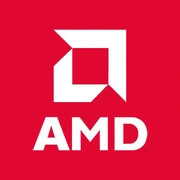AMD Radeon RX 5300

AMD Radeon RX 5300: A Budget Graphics Card for Gamers and More
Let’s determine whether this model is worth considering in 2023.
Architecture and Key Features
RDNA: The Foundation of Performance
The AMD Radeon RX 5300 is built on the RDNA (Navi 14) architecture — the first generation of AMD's revolutionary design, which replaced the outdated GCN. It is manufactured using a 7 nm process (TSMC), providing enhanced energy efficiency and compactness.
Unique Features:
- FidelityFX: A set of technologies for graphics improvement, including Contrast Adaptive Sharpening (CAS) and upscaling (FSR 1.0).
- Radeon Image Sharpening: Enhances image clarity without a significant performance hit.
- DirectX 12 Ultimate: Support for modern APIs, though ray tracing is implemented at a software level through shader calculations, which drastically reduces FPS.
Important: The RX 5300 does not come with hardware Ray Accelerators (as found in RDNA 2/3), making ray tracing in games a rather experimental option.
Memory: Speed vs. Capacity
GDDR6 and Narrow Bus
The card uses 3 GB of GDDR6 memory with a 96-bit bus. The bandwidth is 168 GB/s (14 Gbps × 96 bits / 8). In comparison, the competitor GTX 1650 Super has a 128-bit bus and 192 GB/s.
Impact on Gaming:
- 3 GB is critical for modern titles. Games like Cyberpunk 2077 or Hogwarts Legacy can experience drops due to insufficient VRAM at high settings.
- 168 GB/s is adequate for 1080p, but limitations arise at 1440p.
Advice: Use medium or low texture settings to avoid framebuffer overflows.
Gaming Performance
1080p — Comfortable Zone
Benchmark tests show the following results (average FPS, “High” settings):
- Fortnite: 75-90 FPS (no ray tracing).
- Apex Legends: 60-70 FPS.
- Red Dead Redemption 2: 45-55 FPS (requires optimization).
- Cyberpunk 2077: 30-40 FPS (FSR 1.0 on “Quality” raises it to 50 FPS).
Ray Tracing: In Shadow of the Tomb Raider, activating RT drops FPS to 22-28, making it ineffective.
Resolutions above 1080p:
- 1440p: Requires lowering settings to “Medium.” For example, Call of Duty: Warzone achieves 40-50 FPS.
- 4K: Not recommended — insufficient VRAM and low bandwidth.
Professional Tasks
Not Gaming, but Basic Loads
- Video Editing: In Premiere Pro, the RX 5300 handles 1080p video rendering thanks to support for OpenCL and AMD AMF. However, 4K timelines will lag significantly.
- 3D Modeling: In Blender, the card shows modest results. Rendering a BMW scene takes about 25 minutes (compared to ~7 minutes on an RTX 3060).
- Scientific Calculations: OpenCL support allows leveraging the GPU for basic machine learning, although 3 GB of memory is a serious limitation.
Conclusion: For professionals, this is a temporary solution. It's better to spend extra for a model with 8+ GB of VRAM.
Power Consumption and Heat Output
TDP and Recommendations
- TDP: 100 W. Power is supplied via a 6-pin connector.
- Power Supply: Minimum 400 W (450 W recommended as a buffer).
- Cooling: Most models (e.g., ASUS Phoenix) use a compact cooler with a single fan. Under load, the temperature is 70-75°C.
Case Suggestions:
- Minimum case with good ventilation (2-3 fans).
- Avoid cramped installations — the card is sensitive to overheating.
Comparison with Competitors
Focus on the Budget Segment
- NVIDIA GTX 1650 Super: 4 GB GDDR6, 128-bit bus. Comparable in FPS but 10-15% more expensive.
- AMD RX 5500 XT (4 GB): Higher performance (+15%) and more memory, but with a TDP of 130 W.
- Intel Arc A380: 6 GB GDDR6, better in DX12, but has driver and stability issues.
Why Choose RX 5300?
- The lowest price in the segment (starting from $120 used).
- Support for FSR 1.0/2.0 for upscaling.
Practical Tips
Building a System
- Power Supply: 450 W (80+ Bronze). Examples: be quiet! System Power 9, EVGA 450 BR.
- Platform: Compatible with PCIe 4.0, but performs on PCIe 3.0 without loss.
- Drivers: Use Adrenalin 23.x with automatic updates disabled (known issues with software reinstallation).
Important: For motherboards with UEFI, update the BIOS to the latest version to avoid compatibility issues.
Pros and Cons
Strengths:
- Low price.
- Energy efficiency (7 nm).
- Support for FSR to boost FPS.
Weaknesses:
- Only 3 GB VRAM.
- No hardware Ray Tracing.
- Limited performance at 1440p.
Final Conclusion
Who is the RX 5300 For?
- Gamers with a 1080p 60 Hz Monitor: Ideal for CS2, Fortnite, and Apex Legends on medium settings.
- Owners of Older PCs: As an upgrade for systems with processors like Ryzen 3 3100 or Core i3-10100.
- Budget Builds: For those limiting their total system budget to $300-400.
Alternatives: If budget permits, RX 6600 or Intel Arc A750 will provide more future-proofing. But if maximum savings are needed — the RX 5300 remains an option for less demanding tasks.
Basic
Memory Specifications
Theoretical Performance
Miscellaneous
Benchmarks
Compared to Other GPU
Share in social media
Or Link To Us
<a href="https://cputronic.com/gpu/amd-radeon-rx-5300" target="_blank">AMD Radeon RX 5300</a>